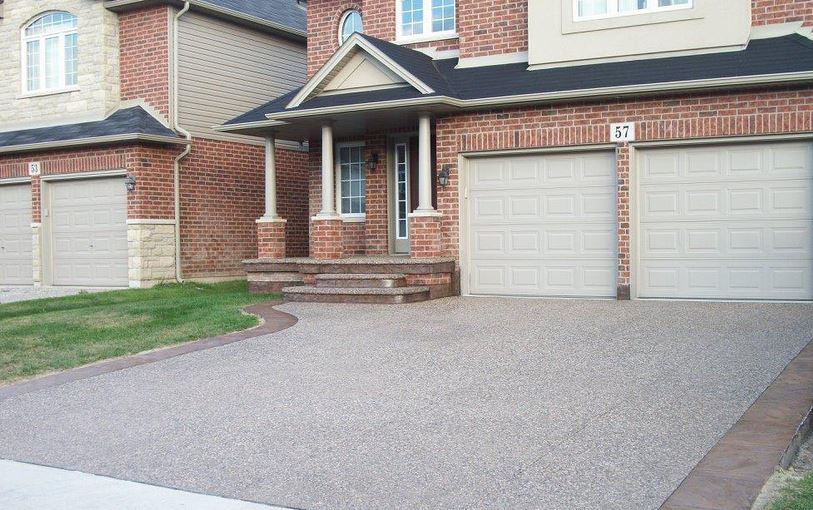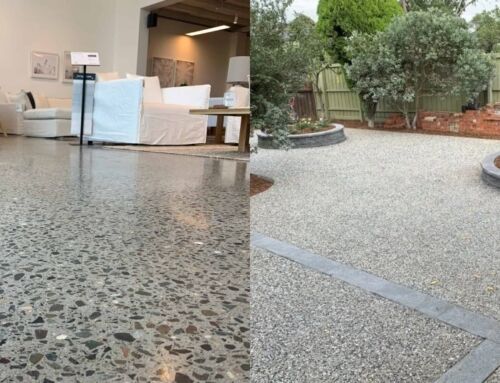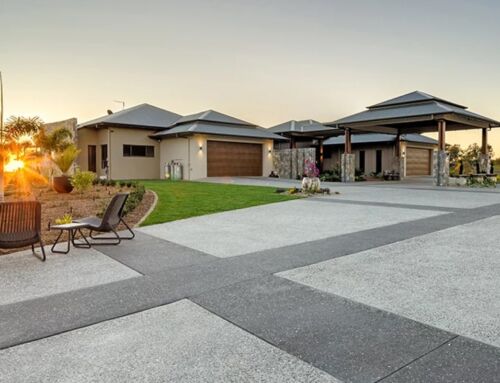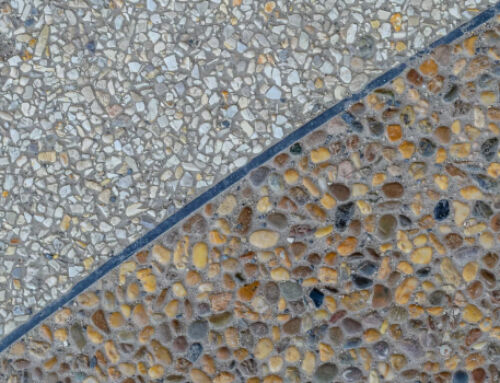What is exposed aggregate? If you’ve ever admired a driveway with a beautiful pattern of rocks, pebbles, or shells, then you were probably looking at exposed aggregate. A form of decorative concrete finish, exposed aggregate is achieved by removing the top layer of cement from normal concrete. You’ll often see this kind of finish in driveways, patios, sidewalks, pool decks, and stair steps.
Aside from its contemporary appearance, there are several benefits to using exposed aggregate. They are skid and slip-resistant which makes them suitable for high-traffic areas. They’re also exceptionally durable, need very minimal maintenance, and can withstand year-round Melbourne climates. But how long will exposed aggregate last?
With the right care, you’re looking at over 10 to 20 years of life.
One of the most attractive benefits of using exposed aggregate is its longevity. At Concept Concrete, we offer up to a 78-month warranty on your exposed concrete driveways, patios, and more. As Melbourne’s top-rated and trusted registered Building Practitioner, trust that we can deliver not just a beautiful concrete structure, but one that would last many years. Call us at 1300 366 343 or get a quote now through our website.
Once you do have your exposed aggregate structure in place, proper care and maintenance should help you extend its life for decades. Caring for exposed concrete is fairly simple and requires minimal time and attention. Here are our top three tips for maintaining exposed aggregate.
Concept Concrete specialises in the removal or replacement of concrete. We don’t offer repair and resurfacing services. Sorry for any inconvenience.
If you want to learn more about exposed aggregate concrete, check out our resources:
1. How Much Does Exposed Aggregate Concrete Cost
2. How to Choose the Best Exposed Aggregate Concrete Surface
3. Plain Concrete vs. Exposed Aggregate: How to Settle the Debate
4. Exposed Aggregate vs. Stamped Concrete: What’s Best For You?
5. Is Exposed Aggregate Concrete Worth It?
#1 – Clean it regularly
Regular cleaning will extend the lifespan of your driveway or patio significantly. Use a broom or leaf blower at least once a day to remove trapped dirt, dust, and debris. At least once a week, wash your driveway down with a medium pressure hose to deep clean exposed aggregate.
Unlike with regular concrete, we don’t recommend power washing when it comes to cleaning exposed aggregate. The high water pressure can cause the exposed rocks to dislodge and create holes in your driveway or patio.
#2 – Remove stains as needed
Particularly for exposed aggregate driveways, you can expect them to have stains or marks over time due to the high traffic in this area. Some common stains are oil and grease stains, tire skid marks, rusting, and moulds. There’s a different technique for each kind of stain so make sure you tackle them with the right approach.
For oil, grease, and tire marks, you can use a driveway cleaning solution to break down the stain. Follow the instructions on the packaging and let the solution sit for a few minutes. Before washing the solution off with water, use a stiff-bristled broom to help lift the staining from the concrete.
Another type of stain that can cause exposed aggregate to look less appealing is rusting. Rusting can be caused either by the iron and metals in bore water or by the aggregate itself. A small percentage of ironstone or pyrite, rocks that are rich in iron oxides, can sometimes be found in pebble mixes.
These rocks often look like normal grey rocks when brand new, but they will rust from constant exposure to air and water. Over time, it becomes easy to identify these offending particles as the rust concentrates around them. To remove rust stains in exposed aggregate, simply use an iron stain remover. However, if there are ironstones or pyrite identified in your exposed aggregate, it’s best to remove them through drilling to avoid further rusting.
Moulds can grow on your driveway, too, especially if the floor remains damp for whatever reason and does not receive much sunlight. To remove moulds, use a mould killing detergent and let it soak. Use a stiff-bristled broom or a plastic scraper to remove as much of the growth as you can. You may have to redo this a few times as moulds can be particularly tough to extract. For particularly difficult cases, you may even have to result in power washing.
Regardless of which kind of stain you’d be dealing with, we highly recommend that you remove them as soon as you see them. The more you let the stain left uncleaned, the harder it would be to remove it later on.
#3 – Protect and reseal the exposed aggregate
When we lay your exposed aggregate, we seal the concrete with a high-quality resin to protect it from oil, grease, water, and stains. Our seal also provides a nice shine to your patio or driveway. As time passes, this seal naturally breaks down due to traffic, cleaning, and friction. To protect your exposed aggregate and extend its lifespan, resealing once a year is highly recommended.
For all your concrete needs in Melbourne, call us at 1300 366 343 or contact us through our website.







